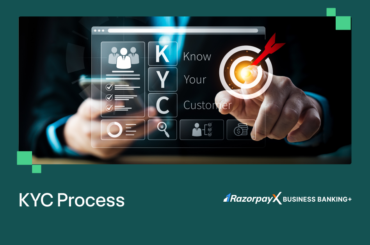An SME loan is a type of loan that is specifically designed to meet the financial needs of small and medium-sized enterprises (SMEs).
India currently has nearly 43 million operational small businesses, which contribute to roughly 33% of the country’s total Gross Domestic Product and provide employment to around 110 million people within the MSME ecosystem.
Hence, it can be inferred that the SME sector holds significant importance in the economy of a developing nation like India.
However, data shows that there is a credit gap of Rs. 25 trillion for this sector. One of the many contributing reasons to this funding discrepancy is errors made during the SME loan application process.
Therefore, it is imperative to be aware of some of the common mistakes to avoid during the SME loan application submission.
Common mistakes to avoid while applying for SME loan
- Not registering the business
A significant number of micro and small businesses in India have not registered with the appropriate government authorities. It is important to note that conventional financial institutions will not consider loan applications from unregistered borrowers for approval. Such rejections can have adverse effects on the creditworthiness of the business and limit its chances of accessing formal credit in the future. Therefore, before applying for a loan, borrowers must ensure that their businesses have obtained the necessary registration certificates. In India, this can be done through the Udyam Registration portal provided by the government.
- Multiple loan applications
According to financial experts, it is not advisable for borrowers to submit numerous loan applications in a brief period. However, due to limited resources, small businesses often apply for multiple SME loans simultaneously, as they require immediate liquidity. Unfortunately, this can lead to the borrower being labelled as credit-hungry and, in turn, perceived as a high-risk borrower by financial institutions. Moreover, as credit applications lead to hard inquiries, submitting multiple applications in quick succession can negatively impact the borrower’s CIBIL score.
- Inability to manage personal finances
When applying for an SME loan, borrowers should not only keep track of their business’s credit report but also their personal financial discipline and health. Lenders assess the credit history and repayment ability of the business, but they also consider the personal fiscal history of the applicant to evaluate if they have maintained a good credit score. If the borrower’s personal credibility is in doubt, the lender may not approve the funding. Therefore, before applying for a loan, borrowers must check their credit score and spending habits to ensure that lenders don’t perceive them as likely to default on the loan.
- Inability to provide documentation
When applying for a loan from conventional financial institutions, borrowers are required to complete a time-consuming and complicated documentation process. Consequently, businesses must have all of their relevant records on hand. These records may include
- Bank statements
- Tax returns
- Investment summaries
- Income estimates, and
- Company credit report (CCR).
Therefore, before applying for SME loans, borrowers should keep a close eye on every aspect of their business dealings. This will ensure that the necessary documents can be produced when required, allowing an applicant to bypass red tape and avoid difficulties.
- Not maintaining transparency
It is important to maintain transparency with the lender and disclose all relevant information related to your business and financials. Not maintaining transparency can lead to rejection of the loan application or legal consequences.
- Not having a clear business plan
A clear and concise business plan is important to convince the lender that your business is viable and has a clear roadmap for growth. Your business plan should cover key aspects such as your business model, target market, competition, financial projections, and funding requirements.
How Razorpay Line of Credit can help small businesses with quick cash
Razorpay Line of Credit can be useful for businesses that need a reliable source of cash flow. With an uncomplicated documentation process and flexible framework, a wide range of businesses are eligible to take advantage of this credit funding facility.
If you sign up for Line of Credit, you can access a loan amount of up to Rs. 25 lakh. It’s worth noting that you can choose to withdraw only the amount you need for your business requirements from your total credit limit. This means you’ll only be paying interest on the amount you’ve used.
With 24/7 cash withdrawal capability, this service can be a critical tool for achieving your business’s financial goals.
Frequently asked questions
Q1. What is the interest rate charged on Razorpay Line of Credit?
Ans. Interest rates for Razorpay Line of Credit begin at 1.5%
Q2. How can I estimate my EMI for Razorpay Line of Credit?
Ans. The Razorpay Line of Credit website provides an EMI calculator that you can use to determine your monthly repayment amount.
Q3. What are the eligibility parameters to sign up for Razorpay Line of Credit?
Ans. In order to avail this SME loan, a business has to meet three basic parameters:
– It should be fully functioning for at least a year
– It should have an annual turnover of Rs. 20 lakhs or more
– The business must be a registered one





